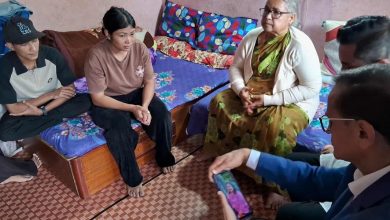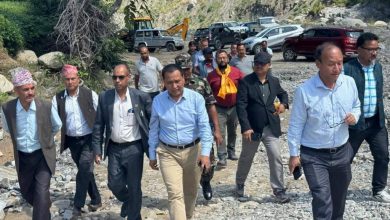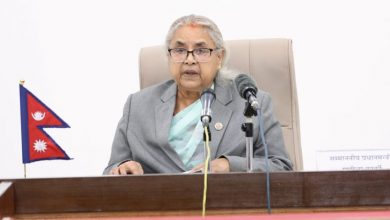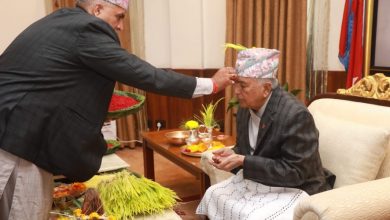100 Years of Radio: Informing, Entertaining, and Educating
Background:
The term “radio” was first used in the year 1987 by French physicist Édouard Branly. Before that radio was called wireless telegraphy. Many scientists/inventors have played their part in the invention of the radio. The efforts of scientists such as Maxwell, Marconi, Lee de Forest, Fleming, and Fessenden, among others, have been imperative for the invention of the radio. Radio has been found to have been used for relaying information to the ships in the 1910s while it was excessively used during WWII for wartime communication. The first regular radio station was founded in the United States of America in 1920. The iconic British Broadcasting Corporation (BBC) was established in 1922, while regular radio broadcasting started in Sri Lanka in 1924, and the All India Radio (AIR) was established in India in 1931. Similarly, radio broadcasting started in Nepal unofficially in 1947 and officially in 1951. Since its inception, radio has been seen as a medium for disseminating information and providing entertainment to the masses. In every country, it can be seen that radio broadcasting started unofficially and gradually evolved into a national broadcast.
In the context of World Radio Day:
United Nations Educational, Scientific and Cultural Organization (UNESCO) declared February 13 as World Radio Day in 2011 and the UN member states started observing the day in 2012. The theme of World Radio Day 2024, prescribed by UNESCO, is “Radio: A Century Informing, Entertaining and Educating.” The theme for this year has been selected to showcase radio’s proud history, present usage, and commitment to the future. This theme highlights a century of disseminating information, providing, entertainment and educational content to the masses since the start of radio broadcasting. Regardless of where radio was operated, be it Asia, Europe, or Africa, radio has centred its broadcasting in mainly the above-mentioned three categories i.e. information, education, and entertainment. Radio has also evolved with the advent of new technologies, from Terrestrial to Digita, radio in the 21st century has now evolved from only being an audio medium to being an audio video and text medium as well. From narrowcasting to broadcasting, radio has seen new inventions like podcasts, and digital/online/internet radios as well.
Radio serves as a powerful tool for fostering public participation in debates and bringing issues to the attention of stakeholders. Furthermore, radio serves as a platform for connecting communities and facilitating positive discussions for social change. It has the ability to not only highlight existing problems but also propose viable solutions.
Radio has been long seen as a platform for institutionalizing democracy as well as other humanitarian causes. Radio to date is still seen as the most used medium of communication and information. The reason for radio being the most popular and effective mass communication medium is due to its ability to showcase the various aspects of society, to share such aspects among the masses, and to provide representation to the voices of different ethnicities, genders, races, regions, and classes. Radio has been able to maintain its superiority among other mass media due to its assessability, flexibility, and regularity while giving representations to different communities via various programs and audio content. Radio broadcasting can be categorized by nature into commercial, public, and non-profit. Professional radio, public radio, and community and non-profit radio, have in some always produced content in line with World Radio Day’s theme since the last century.
Radio is an accessible and inexpensive medium which can reach the people of vulnerable communities living in the remote areas of the country.
It serves as a powerful tool for fostering public participation in debates and bringing issues to the attention of stakeholders.

Furthermore, radio serves as a platform for connecting communities and facilitating positive discussions for social change. It has the ability to not only highlight existing problems but also propose viable solutions. However, the evolving digital landscape, including factors like the digital divide, social media influence, censorship, and economic challenges, presents obstacles for radio stations striving for independence.
World Radio Day commemorates the century-long history of radio and its contributions across various programming genres such as news, dramas, music, and sports. Moreover, radio’s indispensable role during crises, disasters, epidemics, and natural calamities is noteworthy. Looking ahead, radio must embrace democratic values and advocate for marginalized groups, minorities, and refugees.
The situation of radio broadcasting in Nepal:
In Nepal, radio broadcasting has seen significant growth, with 714 regular FM stations and 1186 licensed radios according to recent records from the Department of Information and Broadcasting. Radio Nepal stands out as a prominent broadcasting organization, actively contributing to the country’s radio landscape. Since 1995, FM technology has facilitated the expansion and development of radio networks across the nation.
Similar to global trends, radio stations in Nepal predominantly focus on disseminating information/news, educational content, and entertainment. However, there exists diversity in broadcast formats and schedules. While Nepal’s FM radios operate under various categories including public, community, commercial, and private, the classification outlined in the National Mass Communications Policy 2016 has not been fully implemented.
Nepal’s radios have played a significant role in the country’s transition from a multi-party democratic system to a federal democratic republic. They have championed freedom of expression and the right to information, contributing to societal transformation. With radio presence in every province and at most local levels, radios serve as watchdogs, increasing citizen awareness and conveying stakeholders’ demands to the government to ensure good governance.
Despite the proliferation of information through radio apps, online news portals, and social media platforms, radios face challenges such as a limited advertising market, increased competition, lack of professionalism, and broadcasting aligned with political agendas. Moreover, insufficient progress in economic activities within the country hinders the competitiveness and success of radios.
According to the Categorical Classification Report of Nepal’s Rural and Urban Areas (Census 2021), when classifying the wards at the local level, the highest number of wards in the urban category is in Bagmati Province (292), in the urban category, the highest number is in Madhesh Province (97) and in the rural category, the highest number is in Koshi Province (727). In these areas, where urban and city-oriented populations are densely concentrated, radio penetration has been notably strong, compensating for the limited access to radios in more remote regions.
Government initiatives aim to promote Radio Nepal as a public broadcasting entity capable of reaching 93% of the population. Additionally, categorizing other FM radios as commercial, private, or community-oriented is expected to guide their activities accordingly. However, media literacy remains a concern, with a significant portion of the population unable to critically analyze broadcast content. The literacy rate among individuals aged 15 and above stands at only 76%.
With the advent of digital platforms, the landscape of radio consumption is changing, with an increasing number of listeners accessing radio content through websites, apps, and social media. Traditional radios risk losing listeners/viewers if they fail to adapt and broadcast content on digital platforms. Despite the challenges posed by competition and commercial pressures, Nepal’s radios remain committed to their core mission of informing, entertaining, and educating the public. On this World Radio Day, let us celebrate the enduring legacy of radio and extend our best wishes to all radio professionals.









Comments